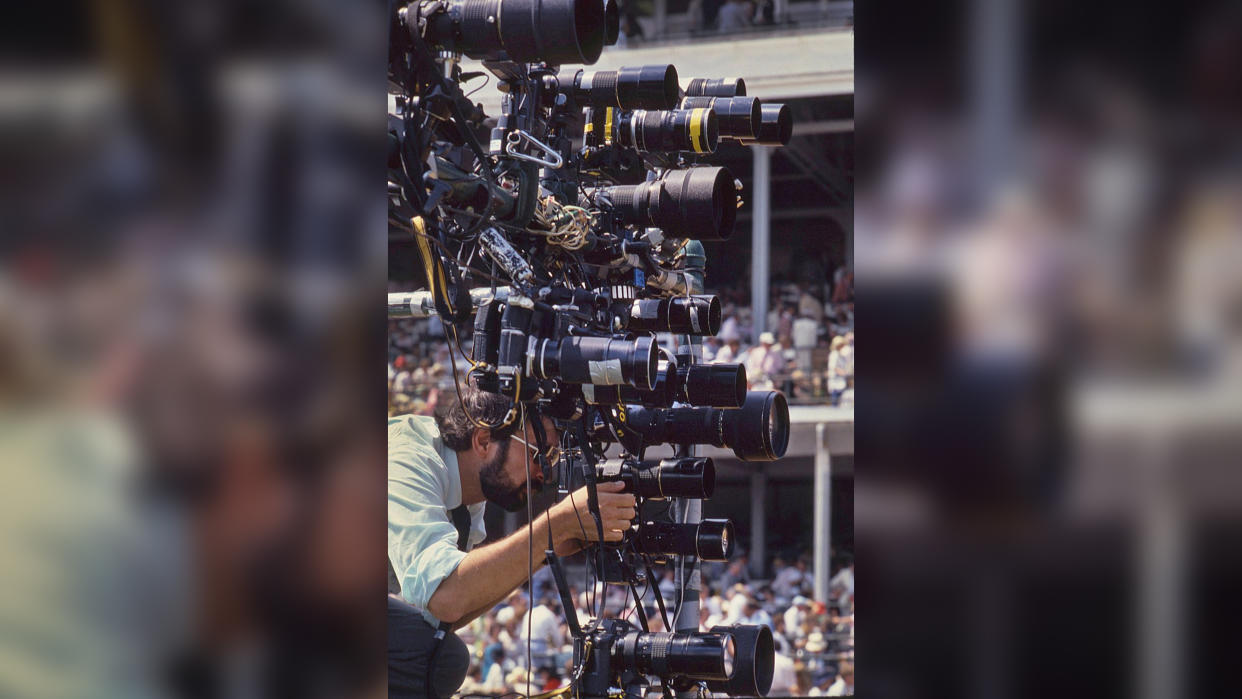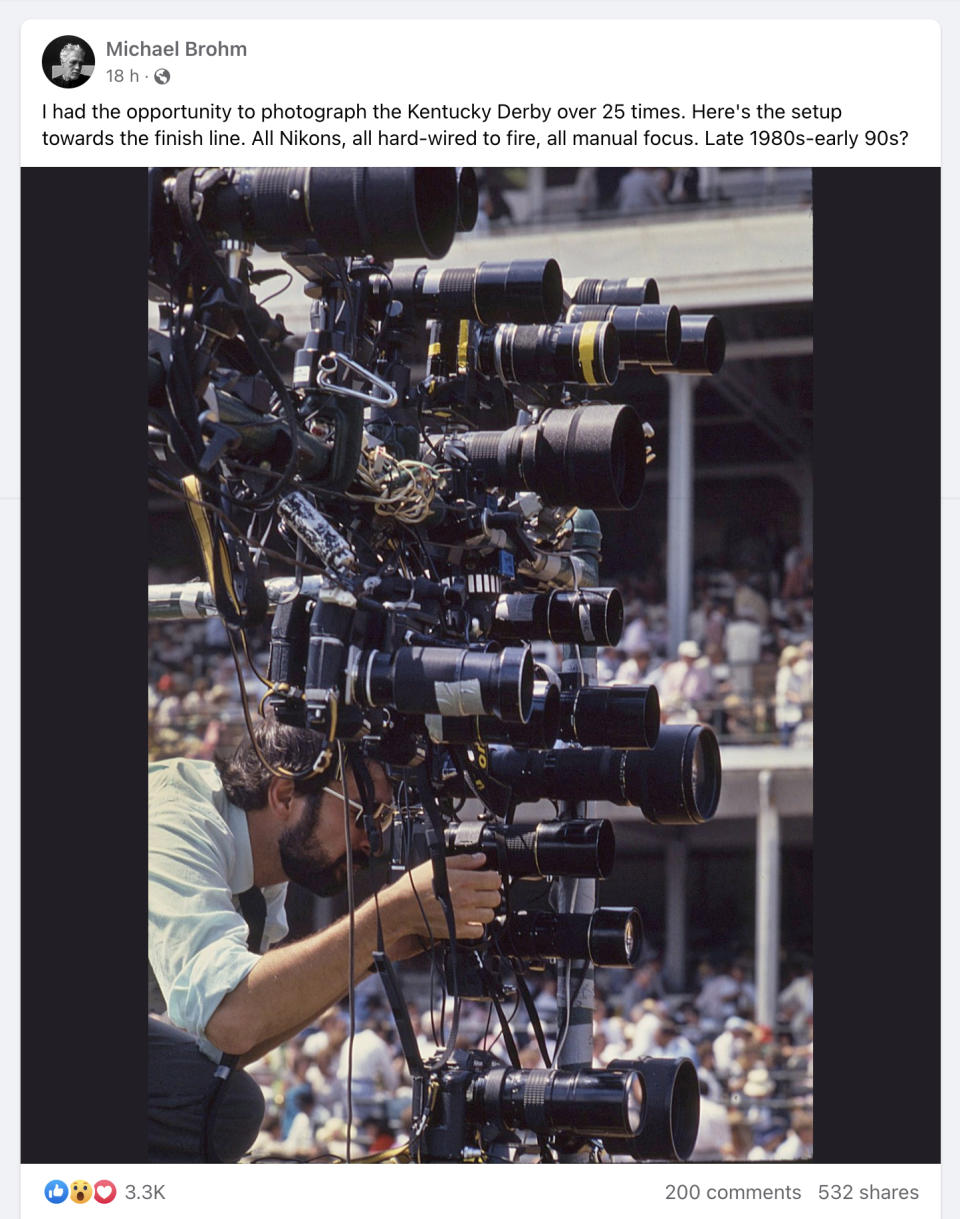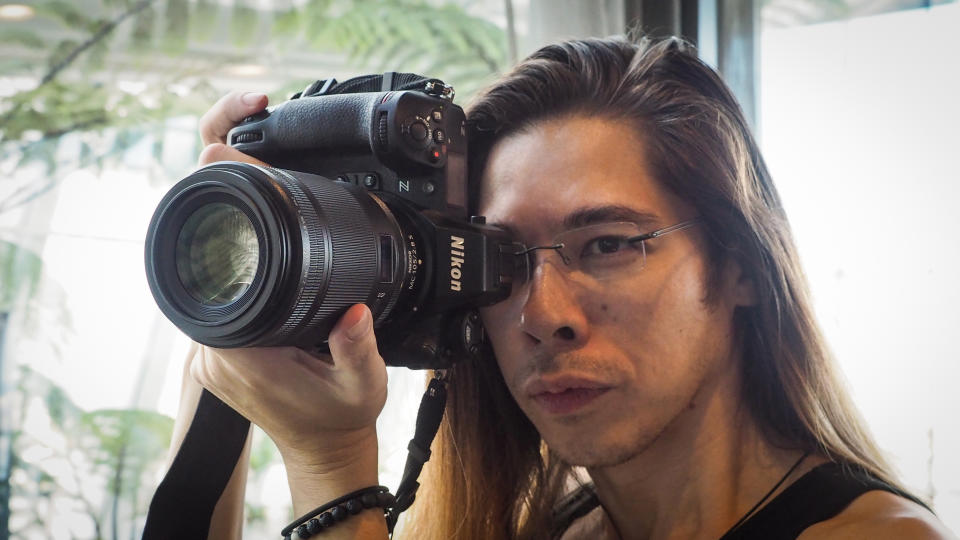18 cameras, all manual focus, at the Kentucky Derby in the 1980s – this viral photo reminds me how spoiled we are

Can you imagine trying to photograph a horse with a manual focus lens? How about a racehorse? How about an entire horse race? How about the finish line at the Kentucky Derby?
That's exactly the situation that sports photographers used to find themselves in. Back in the days when the best sports cameras had no autofocus whatsoever – let alone subject tracking and animal detect and algorithmic AI processors – and fired about 6fps on a good day, getting any shot in focus required true skill.
But getting the shot of the first horse to cross the finish line at the Kentucky Derby? That's next-level stuff.
Below is a photograph that has started to blow up on Facebook. (Because Meta is Meta, I can't actually embed the post in this article, so please click through to the full thread.) In it you can see photographer Michael Brohm, in the late Eighties or early Nighties, nestled amid 18 Nikon cameras with manual focus Nikon lenses at the Kentucky Derby to capture the money shot.
A 25-year veteran of the legendary Churchill Downs derby, Brohm can be seen fine-tuning one of the many bodies on the camera tree (or "P" pole) – all of which were hardwired, rather than radio-triggered, to prevent catastrophic interference.
Brohm's post – and the many comments that accompany it – remind us all just what a different world it was in the days before cameras like the Sony A9 III, the Canon EOS R3 and Nikon Z9 took much of the skill out of sports photography.

"Basically you mount your camera to that [camera tree]," commented Hans-Martin Issler. "Then you focus your lens on the finish line and fix that with gaffer tape. Then you turn on the camera and test your remote cable and lead it to your position."
With only one chance to get the winning shot, the best bet is to CYA: cover your ass. "Shooting a finish line at any horse race with remotes is a crap shoot. The reason for so many cameras and lenses," noted Charlie Bernhardt.
"Will the winner be on the rail? Will the winner be in the 3-4 path? Will he be sandwiched in between 2-3 other horses? Even with camera in hand you can get fooled, especially on the turf / inside position if they [sic] are 2-3 horses jockeying for the lead. The last jump might be the winner. On there [sic] other hand you could have a winner by 2-3 lengths or more! CYA is the name of the game if you can."
Something else that's notable about this image is that every single camera is a Nikon – likely a Nikon F3 or F4. These were the days when Nikon had a monopoly on professional sports photography, before Canon started dominating the scene. Indeed, when asked how different this setup would look today, Brohm simply said, "It looks much the same, except now mostly Canons."
Another thing to consider? Not only are all these cameras completely manual, they're also shooting film. Which meant you not only had to get the shot, you also had to develop it as quick as you could in order to get it back to your agency or picture editor before your rivals.
Again, this is all lightyears away from 120fps shooting and CFexpress cards and WiFi and 1000BASE-T ethernet. I was having a conversation the other day with someone complaining about the autofocus on his camera not being good enough. Oh, sweet summer child, if only you knew!

Take a look at today's best cameras for sports photography and the best lenses for sports photography. You might also be interested in some tips on how to shoot showjumping, from our resident equestrian photographer!

